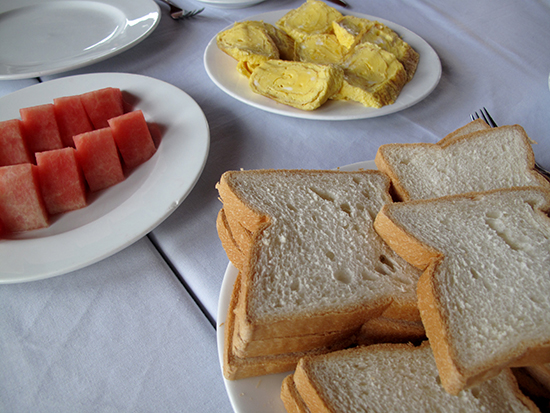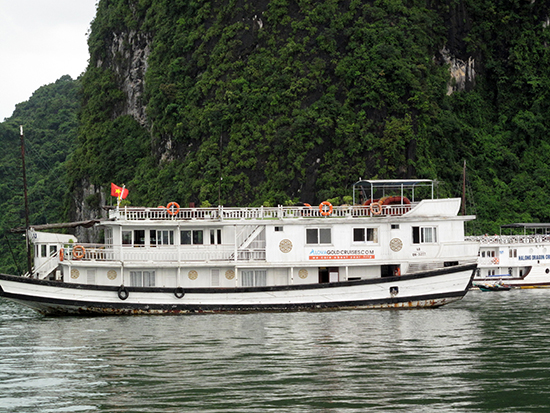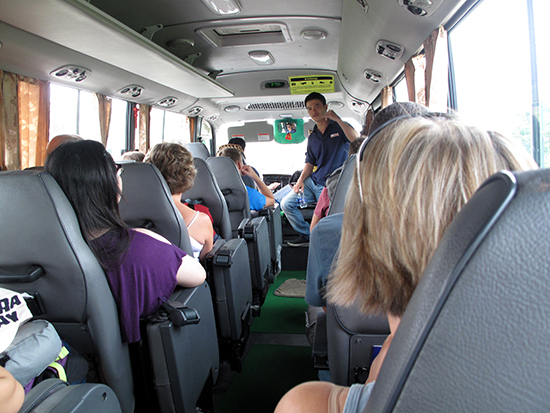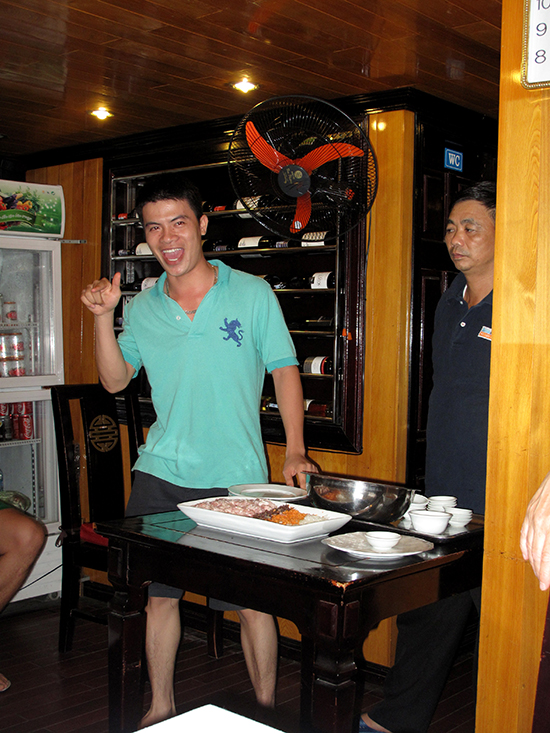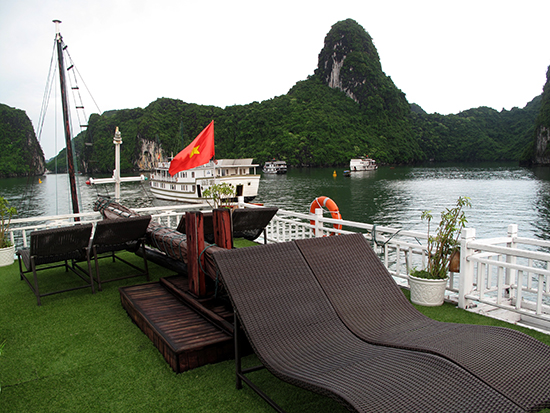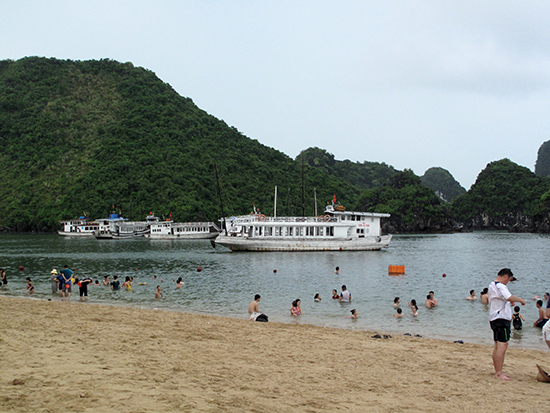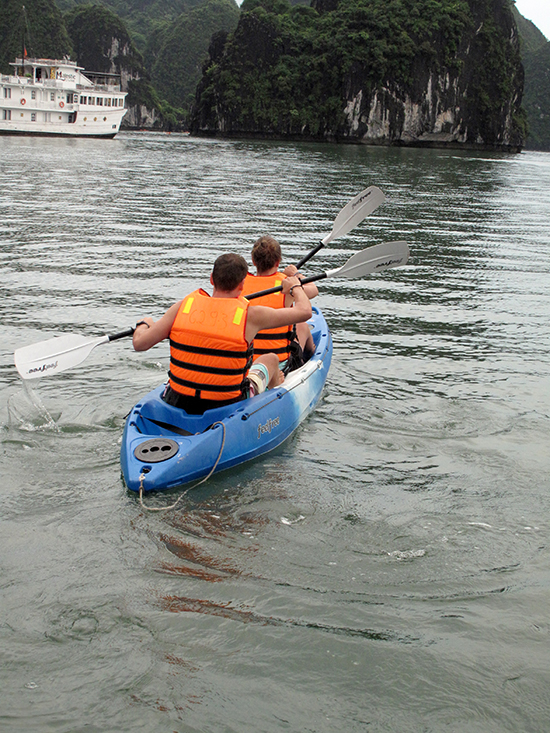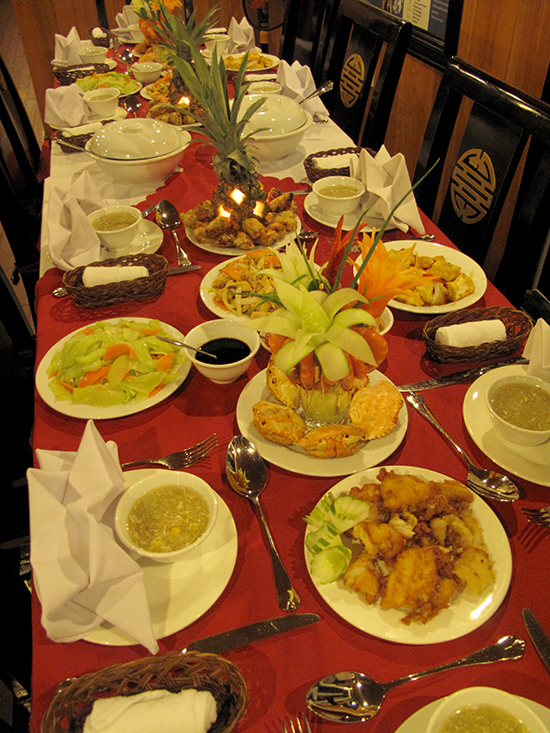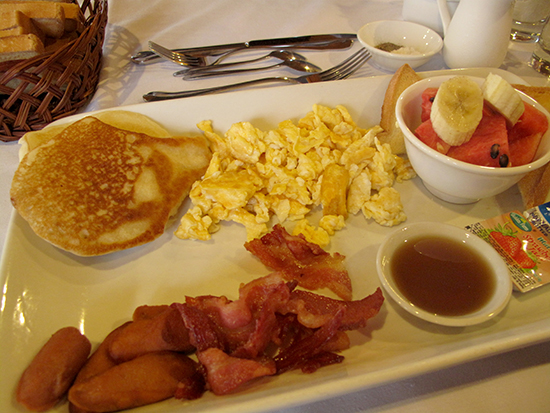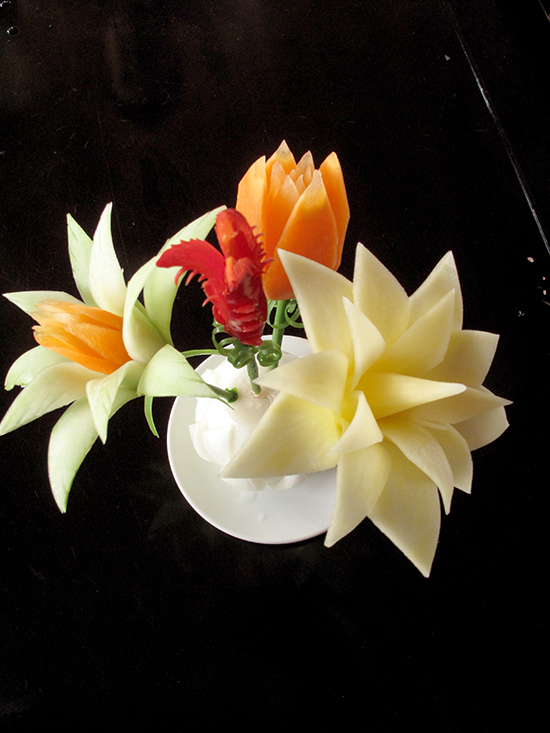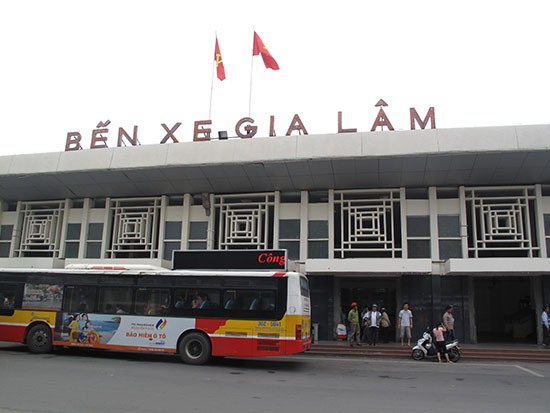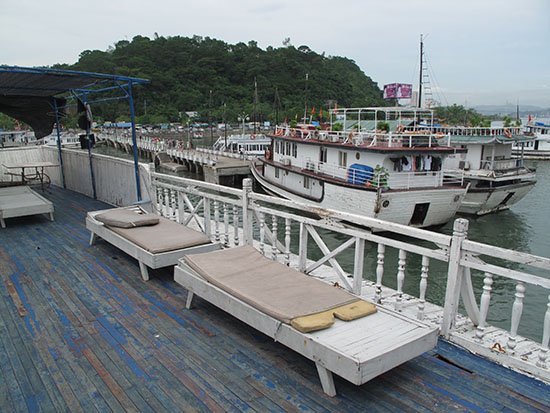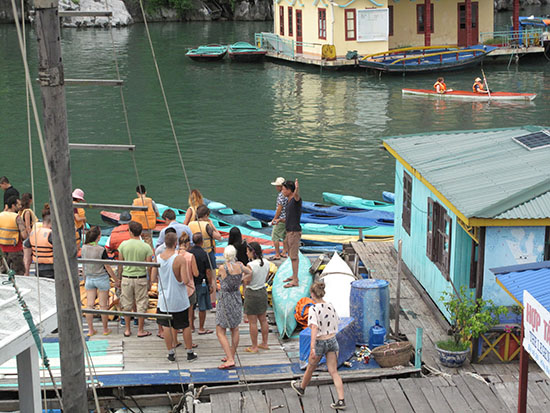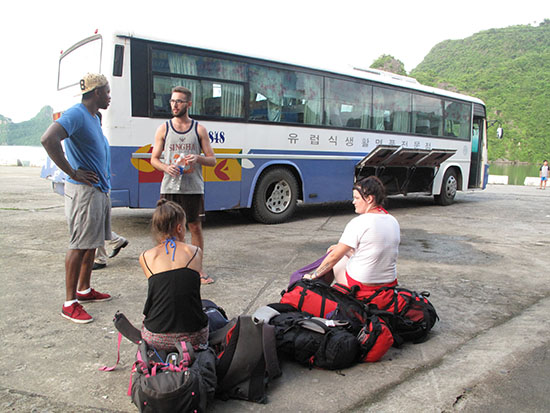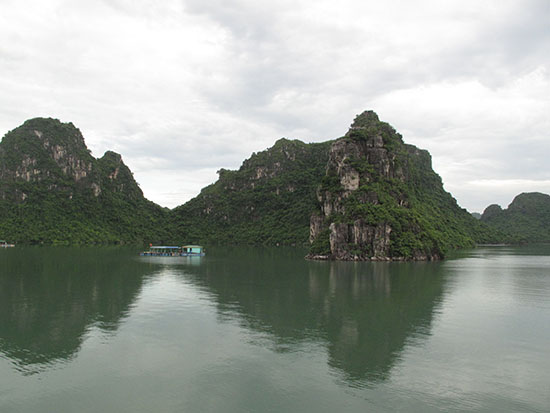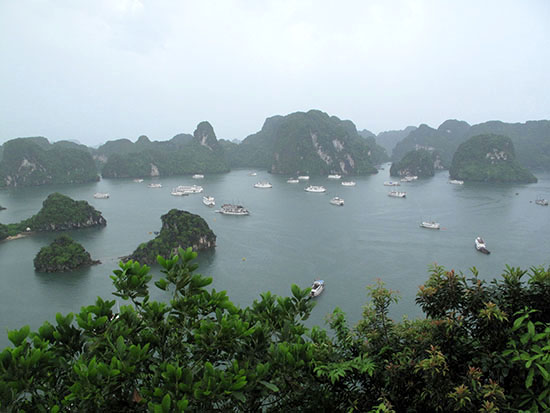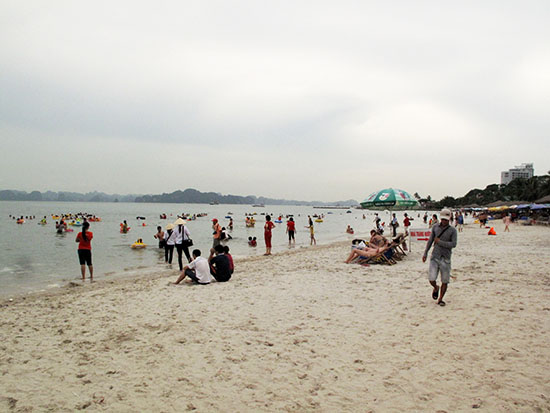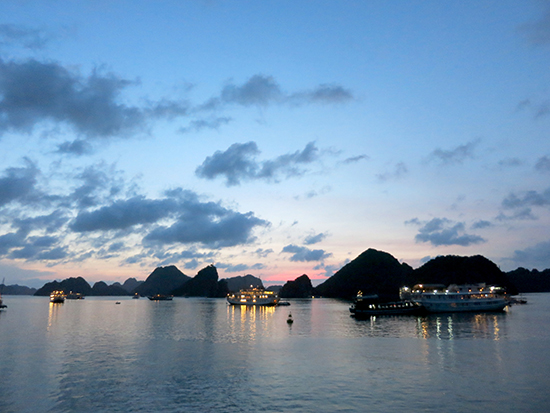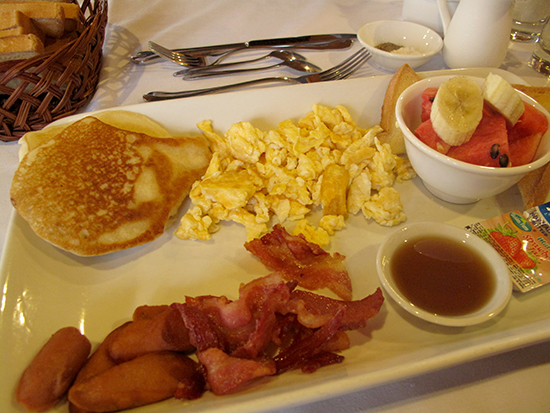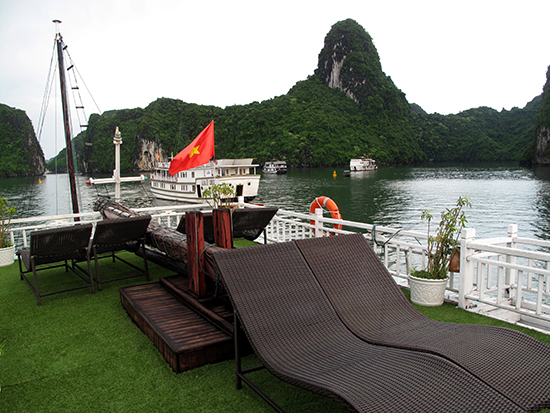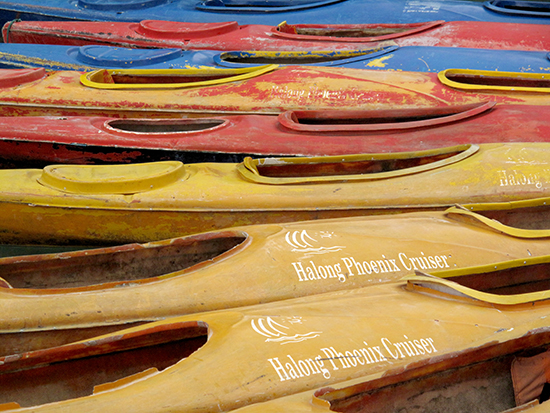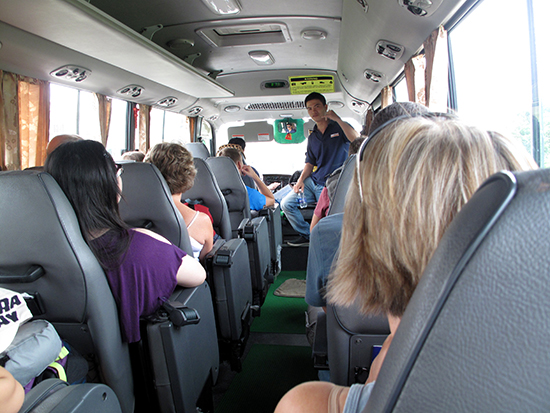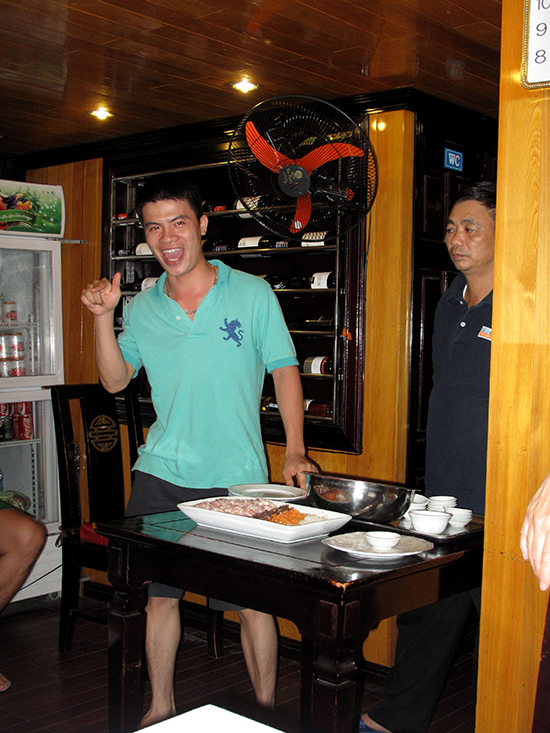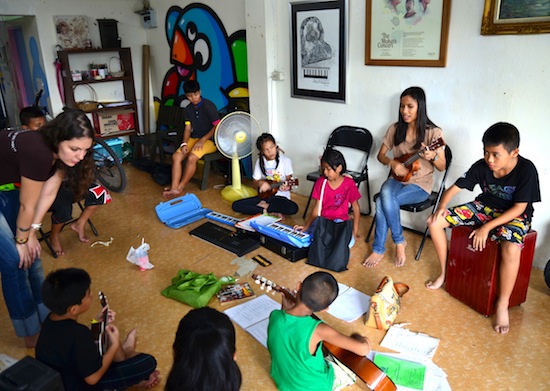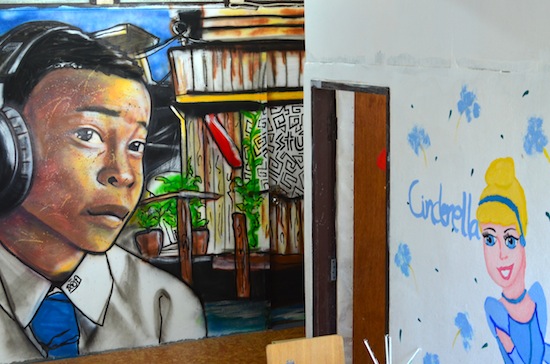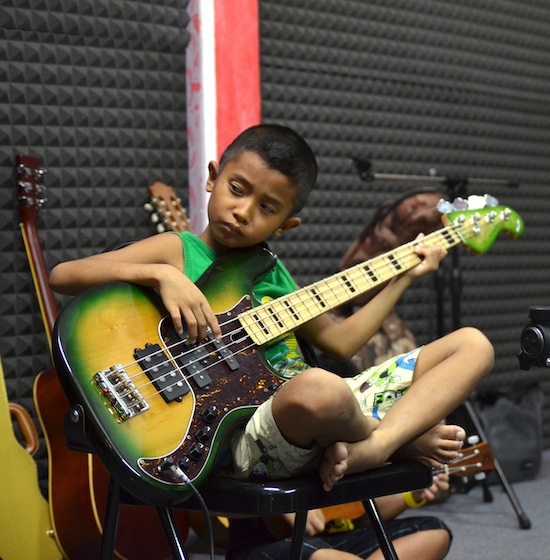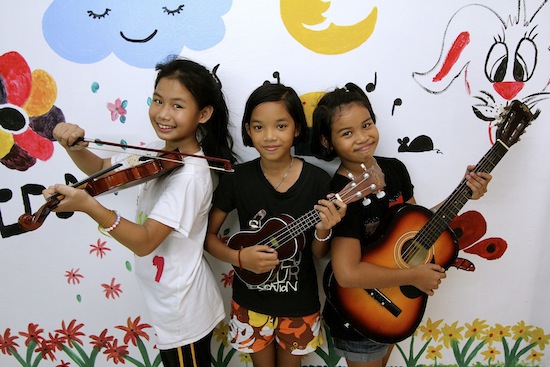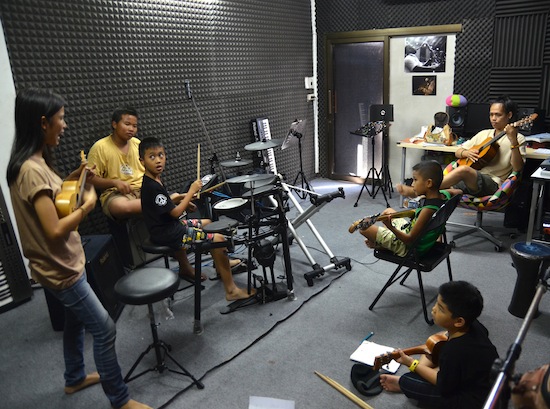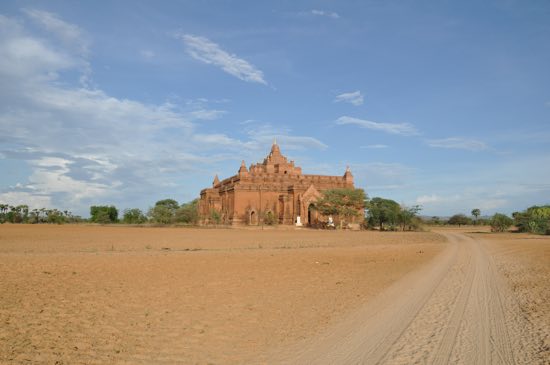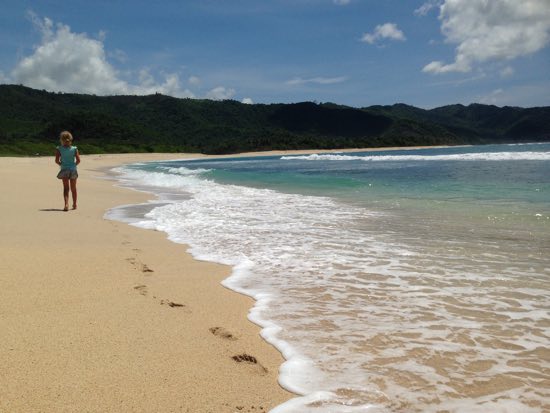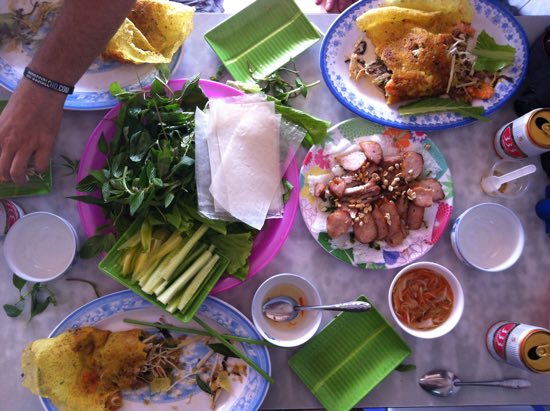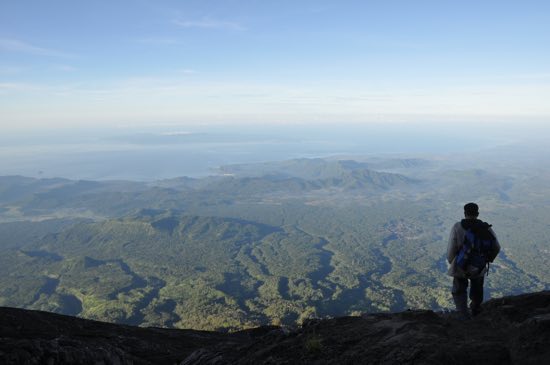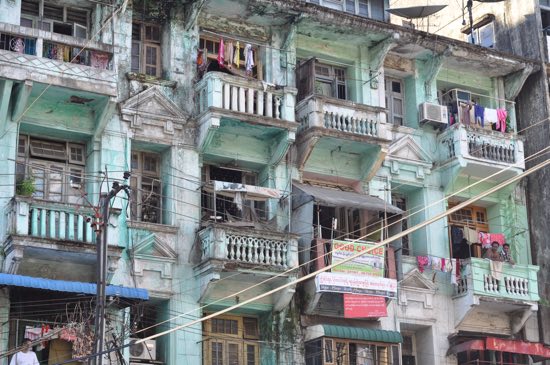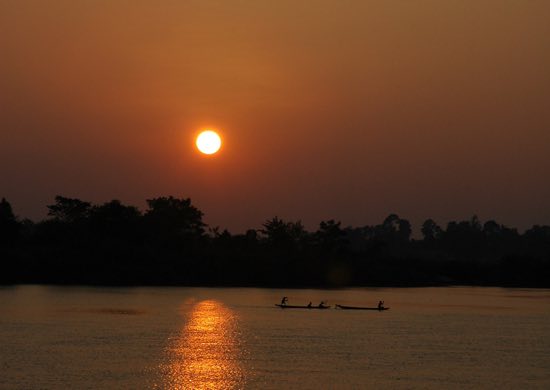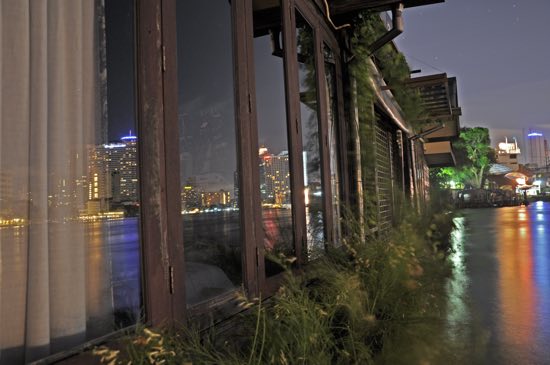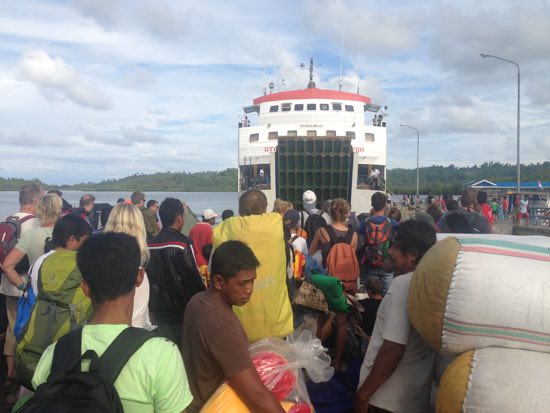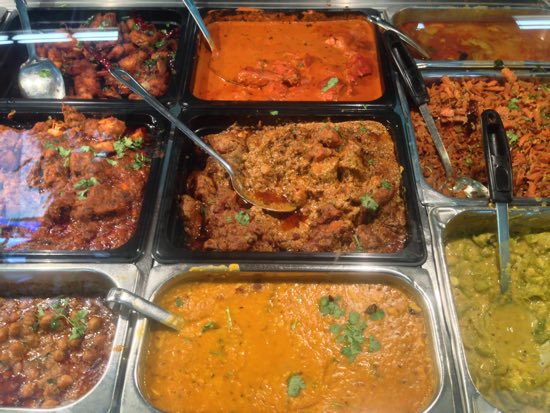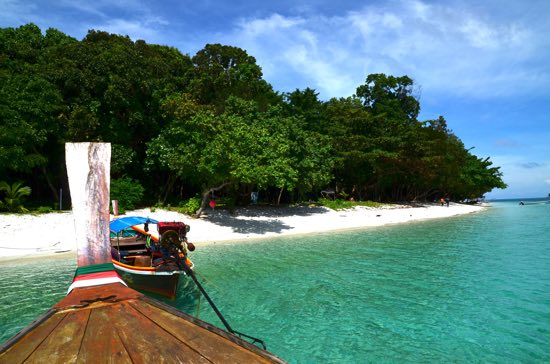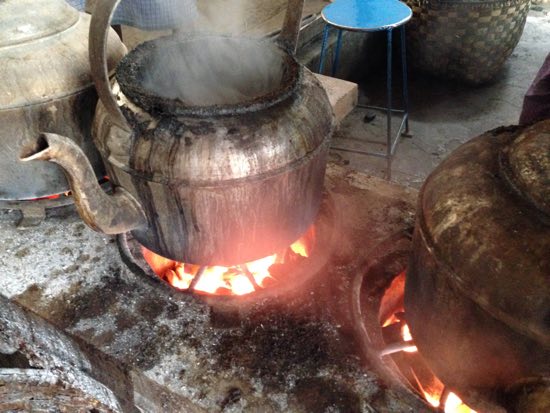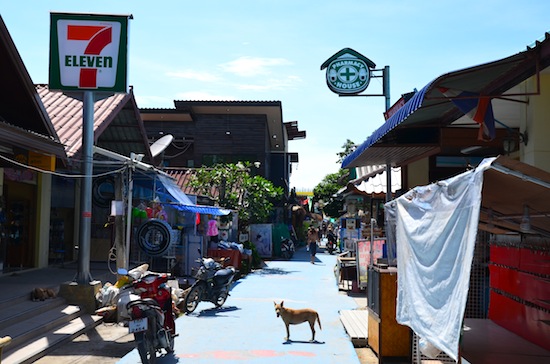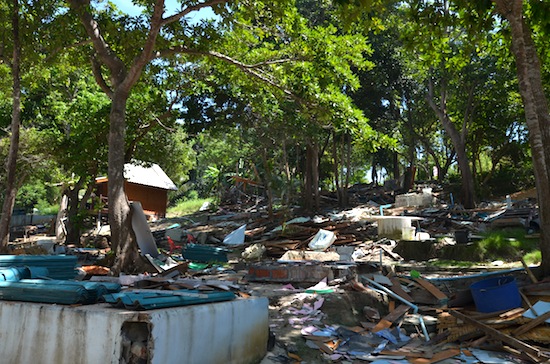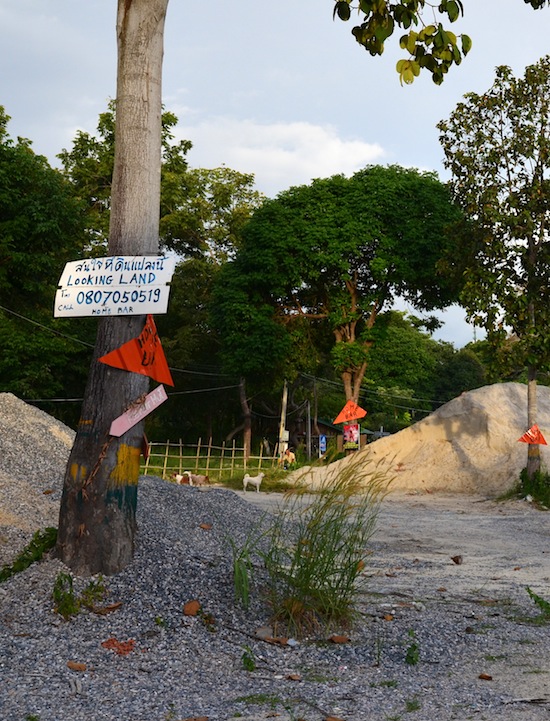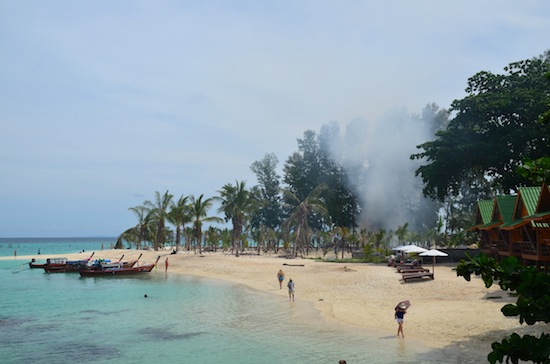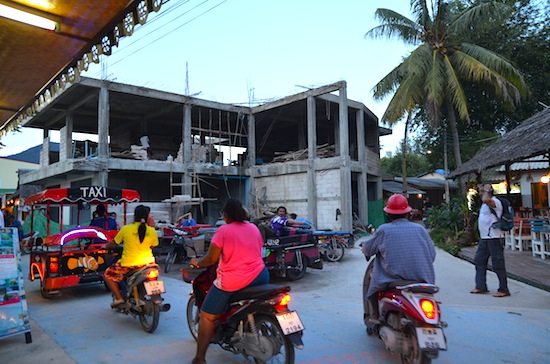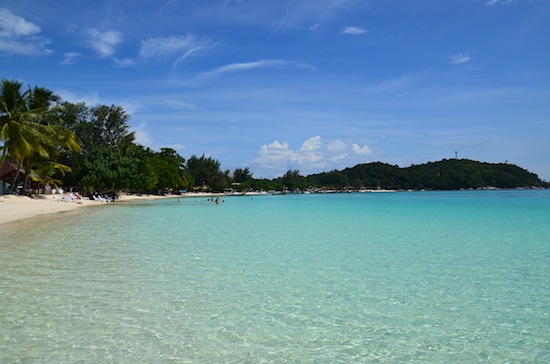Vietnam Tourism have outdone themselves in making sure that Ha Long Bay, a UNESCO World Heritage Site, is regularly cited by travellers as their "must visit" destination whilst visiting Hanoi. And it is, but for most backpackers on a budget, the most relevant question is "How cheaply can I do it and what do I get for my hard earned (and more easily spent on booze) money". Well, read on.
We shopped around downtown Hanoi for a backpacker budget friendly tour and White Pearl was the boat most often mentioned by the travel agents we spoke to. Rates ranged from US$48 to $55 depending on the travel agent, so for $48 (plus the 10% VAT tax that according to our booking agent, every tour operator throws on) we were paid up and ready to take off on our adventure. All tours on offer in Hanoi are ex-Hanoi, so the price of the tour included all transport between Hanoi and Ha Long Bay.

This is what it's all about.
We waited at the pickup point for our bus at 08:00, the time we were directed to be there. And waited ... and waited. Despite the repeated proclamations of the tour agent that the bus was only five minutes away, the bus eventually turned up an hour and a half later with our host dangling out the open door offering his apologies about being so late. He seemed genuinely sorry about the situation, which helped quash my rising levels of irritation. After all, this is Vietnam and an elastic approach to time is almost a prerequisite for travel and maintaining your sanity in this country. We hurtled through the streets barely allowing the remaining guests to alight the bus before we rushed to the next pickup point. By the time the last guest had arrived we had 30 passengers on board in what a real estate agent would describe as a very cozy bus.
Our little sardine can took off out of the smog and pollution of Hanoi towards the coast, stopping for a 20 minute pit stop at a cafe and souvenir shop that presumably had some sort of kickback arrangement with the tour operators. The trip itself took around three and a half hours to get to Ha Long City and the sense of relief in getting off the crowded bus was palpable. We shuffled our way into the departure area like cattle, collected tickets, wrote down our names and before long we were on our way along the pier to alight the boat.

At the end of an uncomfortable bus ride.
Many of the boats on the Bay appeared to be quite similar, leaving me to ponder what the benefits of paying for a more expensive tour were and whilst exposure to the elements had given the boat a fairly weathered appearance, it appeared more than capable of handling the tranquil surrounds of the Bay. We clambered aboard and wandered around the boat before being ushered into the common dining space to hear a little bit of history of the area from our tour guide. The engines fired up and we left the congested pier towards some of the thousands of islands that dot the area.
Almost immediately we were served lunch, which consisted of a range of dishes that, whilst not being culinary masterpieces, were enough to fill us up. We were treated to fresh fish, chicken, rice, salad and a range of other dishes to suit vegetarian guests that were placed in the middle of the table to share. There was an awkward stalemate where no-one wanted to be the first to serve themselves but eventually someone took the plunge and before long each of the tables of six were involved in conversation.
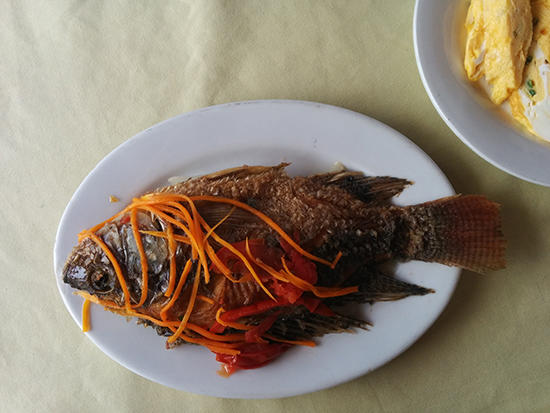
Not quite the platter we got on the mid-range boat.
We continued our way across the Bay to a network of caves where we seemed to arrive in unison with the every other boat in the area. We walked up a steep set of stairs at which point the limestone face of the cliff opens up into a staggering cave network hundreds of feet tall, illuminated with different coloured LED lights for an eerie spectacle reminiscent of the bat cave. We were directed to look at a number of different rock formations said to look like various animals that bared scant resemblance to said creatures and after around 20 minutes were back outside making our way back onto the boat.
Next stop was kayaking at the fishing village that was surprisingly devoid of anyone fishing or a village. Those that paid the $3 at booking time or $5 at the site then went on to have a paddle through the shallow waters around a network of caves. The sheer limestone cliffs jutted imposingly out of the water and made for a pretty impressive backdrop as we navigated our craft around but after 20 of the allocated 40 minutes we'd seen all that we needed to see and returned to the boat to laze on the top deck with a moderately priced beer (35,000 VND).
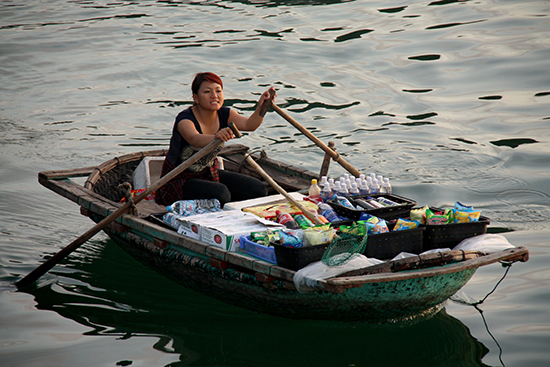
The snacks come to you.
Though we didn't know it at the time, we were rapidly approaching the end of our tour. Once everyone had jumped back on board the boat, we slowly made our way towards the pier at Cat Ba Island where we moored to allow passengers staying on dry land (the price is the same to stay on the boat or at the 2-star hotel on Cat Ba) to depart. The boat moved around 50 metres away from the pier to moor and we were greeted by vendors selling chocolate, water and drinks from their rowboats screeching "Buy something" phrased somewhere between a question and a directive.
As the afternoon drifted into the night, the passengers wiled away the rest of the day jumping from the boat into the waters below and frolicking in the shallows. The sun slowly slipped over the horizon washing the sky with a technicolour kaleidoscope of colours as we sipped on a few more ice cold beers. Dinner was upon us before we knew it and we tucked into another hearty but similarly unimpressive meal. Everyone ascended to the deck again to listen to music and chat for a while before one by one, everyone went to bed, exhausted by the combination of an early start, the sun's rays and a heavy meal to top things off.

Is it a dragon?
The cabins were small but comfortable and had an upright fan that did a valiant job of keeping us cool enough to sleep. An air-con unit was installed in the room, silently mocking us since getting your hands on a remote was going to cost an additional $10. Still, sleep came easily enough on the boat as the calm waters of Ha Long Bay don't tend to have much in the way of waves or currents at this time of year, but this was not to be the case the next day.
We arose to news that a fast moving typhoon that had been ripping through the Philippines was making its way towards us faster than expected. Breakfast of four pieces of dry white bread and a greasy omelette were consumed before we docked at the pier at Cat Ba, collected the passengers that had stayed on the island and made our way back towards Ha Long City. The weather was beautiful with clear skies but the calm facade belied the ferocious storms that were just a handful of hours behind us. We got to shore and ate at a small restaurant before crowding back onto the bus to head back to Hanoi.
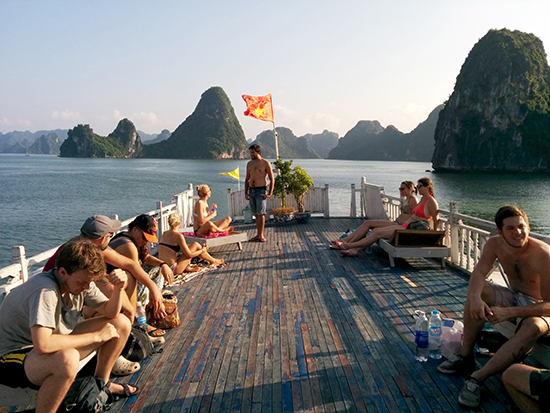
Who cares about the lack of loungers it's a rate blue sky day in the Bay.
We squeezed back into the minibus surprised that there was one spare seat, but before long we picked up a local from a small restaurant and filled the last remaining seat ensuring that everyone was in a similar level of (dis)comfort for the three and a half hour journey back to the city. Another pitstop was made, just in case anyone wanted to by a seven foot tall marble statue on the way home, and we cruised back into Hanoi without incident.
The tour guide made a valiant effort of remembering where each of the 30 people needed to get off but after realising I was likely to be the last to depart and that it'd taken an hour and 20 minutes to get picked up, I made the judgement call to jump ship early and explore some more of the Old Quarter.
Tour: Two Day/One night budget tour
Cost: US$52
Operator: White Pearl
Just about any travel agent in Hanoi can arrange to get you onto a tour of Ha Long Bay aboard the White Pearl. For more mid-range and upper Ha Long Bay tours, Agoda offers competitive rates.







